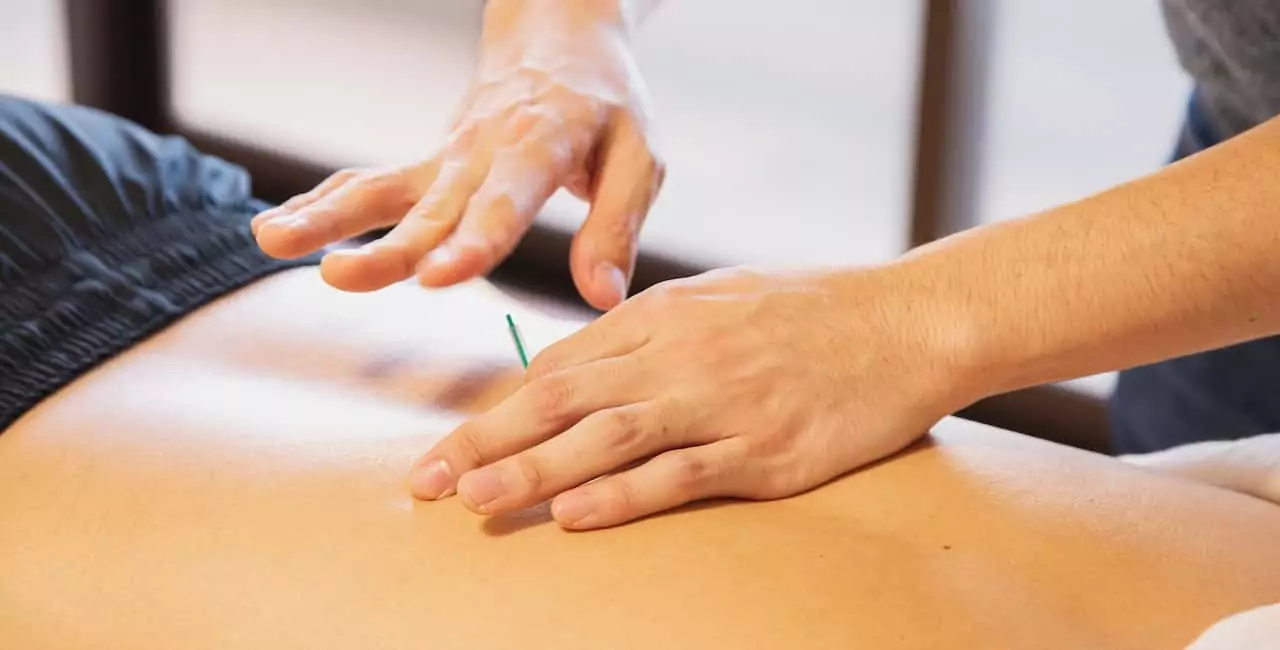What is dry needling?
Dry needling is a part of acupuncture therapy that physical therapists and other well-trained professionals commonly use to treat the pain conditions of the musculoskeletal complex. In this therapy, fine, thin, and sharp needles are inserted through the skin to reach the trigger points in myofascial (myo means muscle, and fascia is described as thin, white-colored connective tissue wrapped around the muscle) areas.
The trigger points are the susceptible and knotted areas developed in the muscles and can be extremely painful even with a simple touch. The professionals use thin and solid needles containing no medication inside them. Hence the term “dry needling” is given to it. On the contrary, the trigger point injections given by different physicians are loaded with medicines that help relieve pain symptoms in a localized area.
Overusing muscles during athletic exercises, sports activities, or heavy physical workloads can slow down the muscles’ blood supply, sending them into an energy crisis. A restricted blood supply flow causes a state of hypoxia, meaning a low level of oxygen supply inside the muscular complex and a low level of nutrient supply. As a result, the area gets into a state of hypoxia, causing the pH of surrounding tissue to turn acidic. This causes sensitization of the nerves, which ultimately presents with the signs of pain, discomfort, and soreness of the tissue, muscles, and the surrounding complex region.
A simple stimulation through dry needle therapy triggers the sensitive muscles to flush back the standard blood supply and release the tension. It also triggers the nerve supply in the brain that releases endorphins (the feel-good hormones), the body’s self-made pain medication. The local twitch response by the muscles proves that the muscle is reacting to the prick therapy given by your therapist. Several studies prove the concept of needle-pick therapy and its importance in managing pain and inflammation in sore muscles without any invasive surgical procedure.
It is evident that dry needling aid in decreasing the symptoms of pain while improving the range of motion of the musculoskeletal complex. Among several conditions that can be managed using needle-prick therapy, some of them include joint or disc-related problems, muscular tension, inflammation of the tendons and ligaments, injury secondary to road traffic accidents or whiplash, migraines and headache including cluster and tension-type headaches, disorders related to the jaw joint or temporomandibular joint, nerve related or neuralgic pain, and many other related diseased states.
Before starting the dry needling therapy, the professionals will take a detailed patient history, do the required physical examination, and prescribe different tests, including radiographic and blood tests, to ensure the disease condition. Pregnant ladies, people with a compromised immune system, patients who take regular doses of blood thinners, including aspirin, or patients who have recently undergone any surgical procedure should avoid taking dry-needle therapy. Minor children under 12 and people afraid of needle pricks are also recommended not to take dry needle therapy as part of their management plan.
Different types of dry needle therapy
There are several ways through which your professional can provide dry needle therapy. Some of them are included as

Trigger Point Dry Needling
As the pain is triggered from a single point, the needle is inserted in that area to release the pressure and symptoms of pain and discomfort.
Superficial Dry Needling
It is the most common way of inserting the needle to a distance of only a few millimeters inside the skin, reaching only the superficial epidermal layer and avoiding contact with related muscles and bones.
Deep Dry Needling
It involves highly trained and skilled professionals, as the needle has to target the involved muscles directly. The perception of pain can be changed entirely by the professionals following deep dry needle therapy.
Periosteal Pecking
The dry needle is attempted to hit the bone directly to initiate the healing process. The production of hyaluronic acid accelerates the anti-inflammatory process with a surge in endogenous opioid levels helps in relieving the pain symptoms in the musculoskeletal complex.
Electrical Stimulation
It is a specialized form of dry needling where electric stimulation is attached to the needles used in the therapeutic procedure.
Peripheral Neuromodulation
It is performed only by licensed acupuncturists or western medical practitioners with education in internal medicine. It is a complicated and dynamic form of needle therapy that affects the muscles and tissues to relieve symptoms of pain and discomfort.
Conclusion
Dry needle therapy is a form of acupuncture therapy that trained professionals to give to help patients relieve the musculoskeletal complex’s discomforts.




